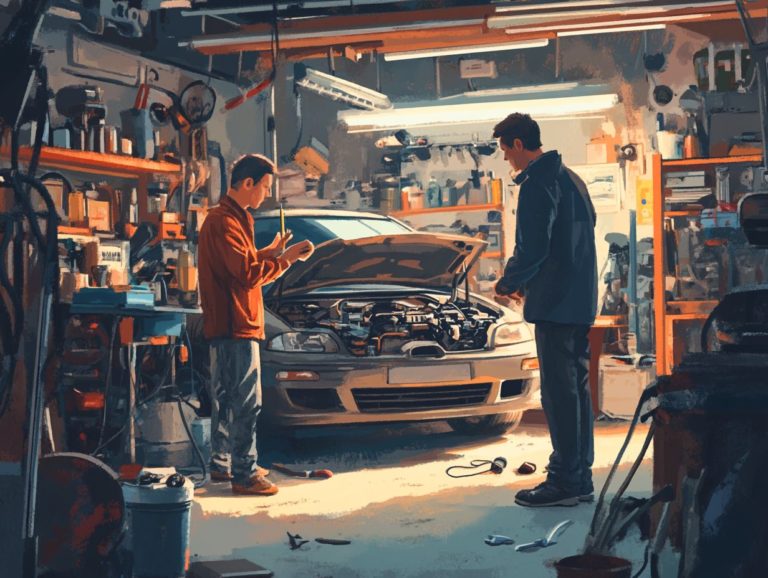How to Negotiate Used Car Trade-Ins
Are you considering trading in your car? The process might seem intimidating, but it doesn’t have to be.
Get ready to discover everything you need to know from understanding what a trade-in is to preparing for negotiations.
We ll explore alternative selling methods too, in case trading in isn’t your best option. Maximize your car s value!
Contents
- Key Takeaways:
- Understanding the Trade-In Process
- Preparing for the Negotiation
- Negotiating the Trade-In Value
- Finalizing the Trade-In Deal
- Alternative Options for Selling Your Car
- Frequently Asked Questions
- What is a used car trade-in and why should I negotiate it?
- How do I determine the value of my used car trade-in?
- Should I clean and fix up my used car before negotiating the trade-in?
- Can I negotiate the trade-in value separately from the price of the new car?
- What are some tips for negotiating a used car trade-in?
- Is it possible to negotiate a better trade-in value if I owe money on my current car?
Key Takeaways:
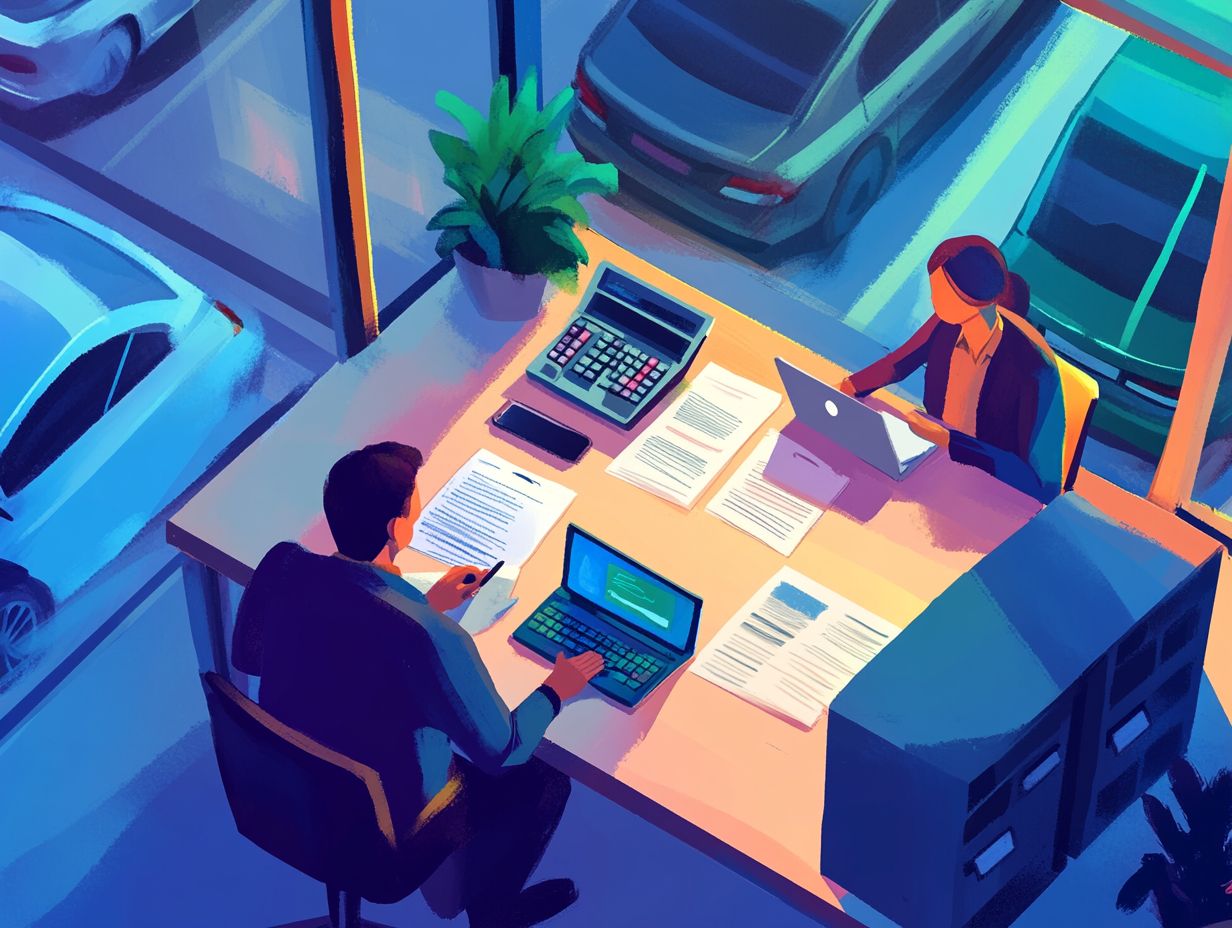
- Understand the trade-in process to know your options and potential drawbacks.
- Research and prepare your car before negotiation to ensure a fair trade-in value.
- Negotiate effectively by being informed and confident. Always finalize the deal in writing.
Understanding the Trade-In Process
Understanding the details of the trade-in process is crucial if you’re selling a used car. This journey includes understanding new car trade-in value, evaluating your vehicle’s worth, and negotiating with dealers.
Resources like Kelley Blue Book and Edmunds are invaluable for assessing your car s value. Staying informed about current market conditions can significantly improve your chances of getting better offers from dealerships.
What is a Trade-In?
A trade-in is when you offer your current vehicle to a dealer while purchasing a new car, allowing you to offset part of the purchase price based on its estimated value. This method simplifies selling your old car and enhances your buying experience.
When you decide to trade in your vehicle, the dealer will conduct a thorough appraisal, taking into account factors such as condition, mileage, and market demand. The trade-in value you receive can significantly ease the financial load of acquiring a new vehicle, making this an appealing option for many buyers.
Moreover, utilizing a trade-in can help you save on sales tax in certain states, as the tax is calculated solely on the net purchase price after deducting the trade-in amount. Therefore, understanding the trade-in process is crucial for anyone looking to make a savvy financial move while transitioning to a new car.
Pros and Cons of Trading-In
Trading in your vehicle presents a unique blend of advantages and drawbacks that can significantly influence your financial landscape, making it crucial for you to weigh these factors carefully before making a move.
On one hand, this process brings notable convenience; dealerships typically manage every detail of the transaction, sparing you the hassle of advertising and negotiating with potential buyers. Trading in your vehicle may also provide tax benefits, as many states permit you to apply the trade-in value against the price of your new purchase, effectively lowering your taxable amount.
But don t forget to consider the downsides as well. You might end up receiving a lower market value for your vehicle compared to what you could achieve through a private sale, which could translate into a financial loss. By understanding these factors, you can make informed choices that align with your specific circumstances.
Preparing for the Negotiation
Preparing for the negotiation phase of your trade-in is essential for securing the best possible offer. This process starts with conducting thorough research on your car’s value and assessing its current condition, along with utilizing tips for negotiating used car prices.
Researching Your Car’s Value
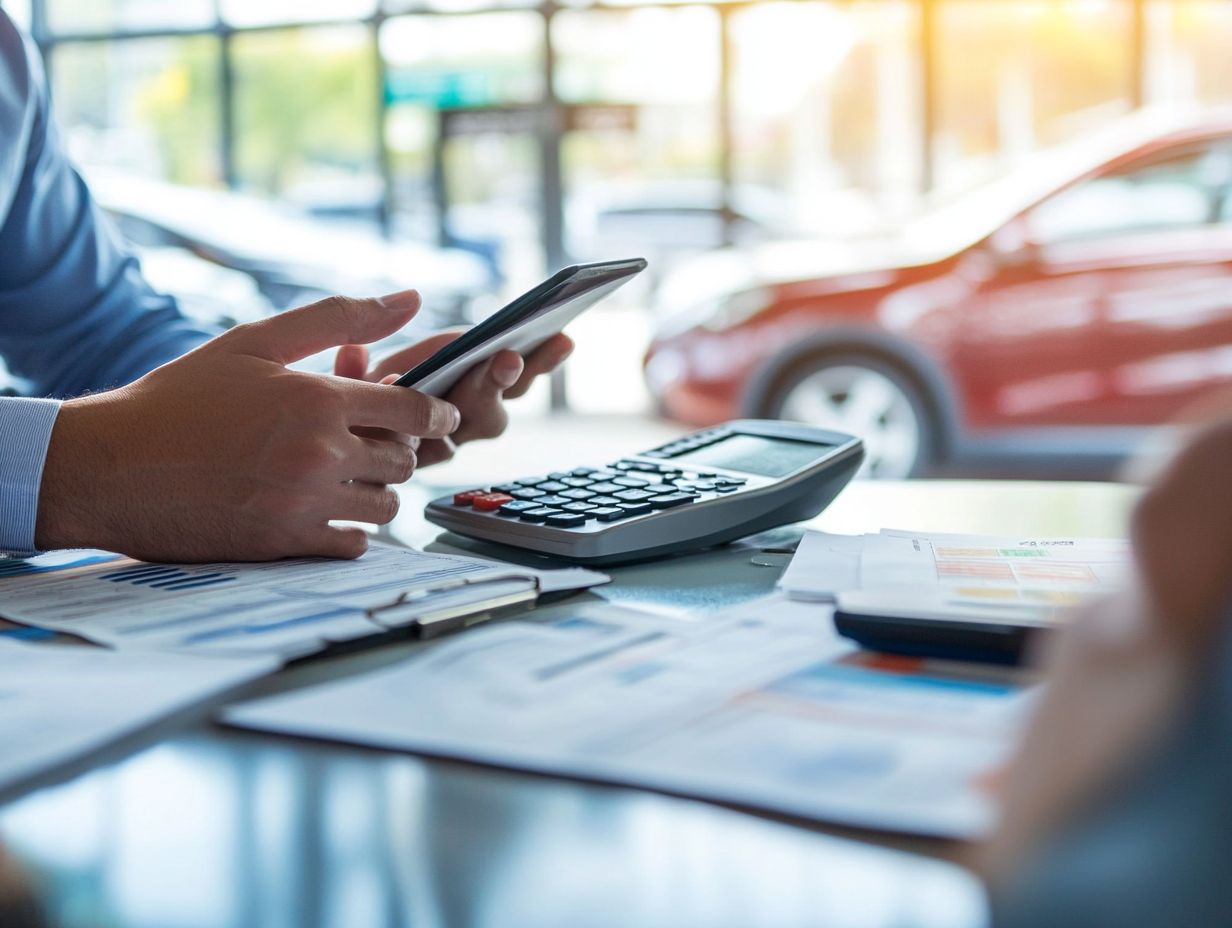
Researching your car’s value is a crucial first step in the trade-in process. Platforms like Kelley Blue Book and Edmunds offer essential appraisal data that accurately reflects current market conditions.
By exploring these resources more thoroughly, you can tap into a wealth of information, including vehicle history reports and similar vehicles that have recently sold, which will deepen your understanding of your car’s market value.
Utilizing online tools effectively means comparing values across various platforms to pinpoint discrepancies and build a comprehensive view of your car s worth. Staying aware of market trends like demand fluctuations, seasonal shifts, and economic factors gives you the power with the insights needed to negotiate with confidence. This ensures you secure the best deal during the trade-in process.
Getting Your Car Ready for Trade-In
Getting your car ready for trade-in means enhancing its visual appeal, addressing any mechanical issues, and ensuring it passes inspection. This will maximize your trade-in value.
To navigate this process successfully, start by giving your vehicle a thorough wash, both inside and out, to elevate its overall appearance. Removing personal items and tidying up the interior can significantly influence first impressions.
Next, take a moment to assess any minor repairs that might be necessary, like fixing dents or replacing worn-out tires. These small efforts can make a big difference in boosting your car s appeal.
Organizing important documents such as maintenance records and previous service receipts shows potential buyers that your vehicle has been well cared for. This not only enhances its perceived value but also leads to a better offer during the trade-in process.
Negotiating the Trade-In Value
Negotiating the trade-in value may seem intimidating, yet arming yourself with effective strategies and learning how to trade in your old car effectively can substantially enhance your chances of securing the best deal.
Tips for Effective Negotiation
Effective negotiation tips can truly transform your experience when securing a favorable trade-in value. Understanding the trade-in process for new cars allows you to make more informed financial decisions as you purchase your new vehicle.
By arming yourself with knowledge about current market trends and trade-in values for your vehicle, you ll approach discussions with potential buyers or dealers with confidence. Stay calm; it s key to making the best deal.
Recognizing when to walk away from a deal gives you the power to explore better opportunities, ensuring you never settle for less than your vehicle s true worth. When you combine these strategies, you re likely to achieve not just a better trade-in offer, but also a more gratifying overall buying experience.
Finalizing the Trade-In Deal
Finalizing your trade-in deal requires meticulous attention to detail in completing the necessary paperwork. Ensure that all transaction specifics are clearly articulated, and take the time to comprehend how sales tax may influence the overall financial outcome.
Paperwork and Finalizing the Transaction
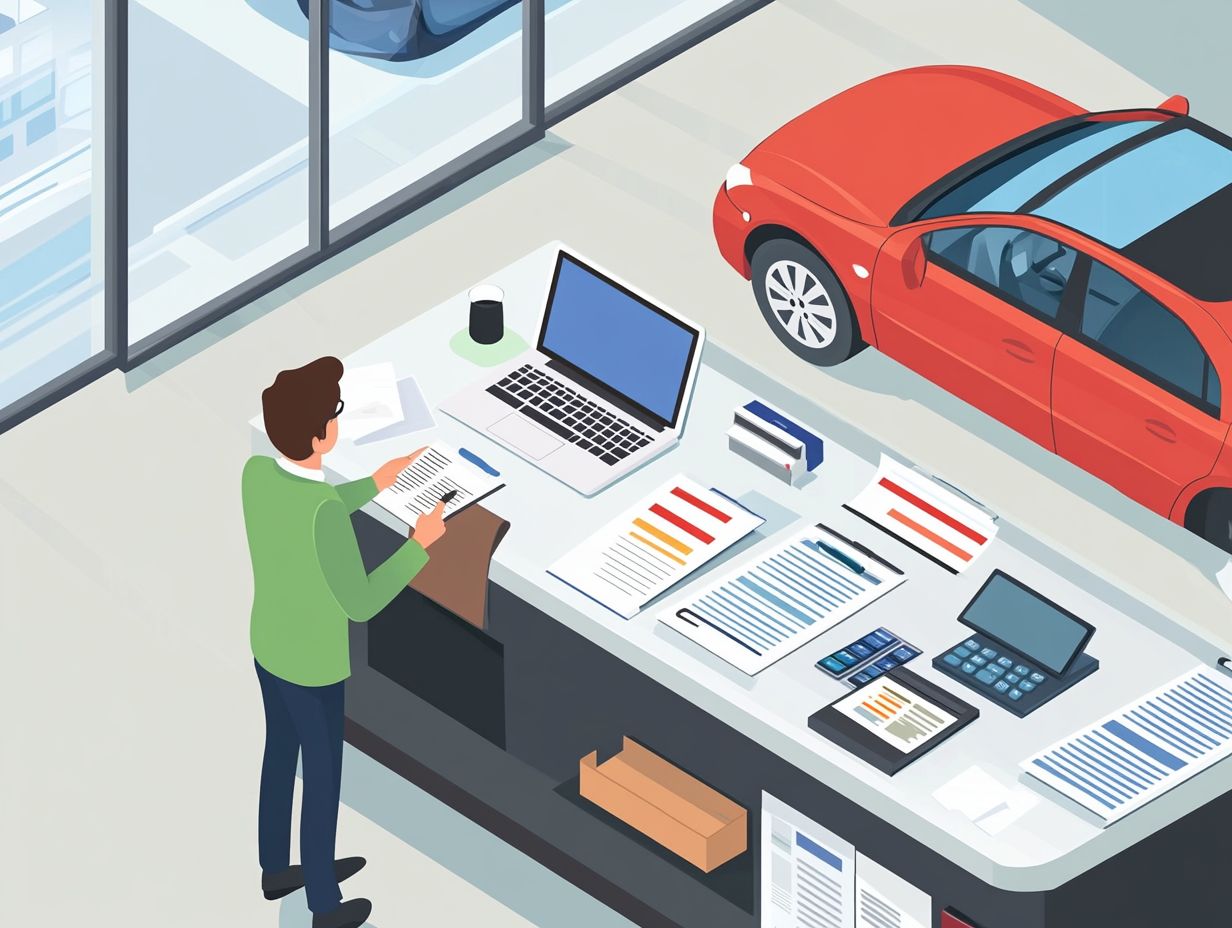
The paperwork involved in finalizing a trade-in encompasses essential documents that validate your transaction and confirm the details you’ve agreed upon with the dealer.
Understanding these documents is crucial, as they typically include the vehicle’s title, registration, and any outstanding loan information. All of these serve to protect both you and the dealer. It s also wise to have maintenance records readily available, as they can showcase the car s upkeep history.
When you approach a trade-in, taking the time to review these documents carefully ensures that all information is accurate and up to date. This helps you avoid potential disputes. To facilitate a smooth transaction process, verify the dealer’s requirements in advance and prepare duplicates of all relevant paperwork. This ensures everything aligns perfectly with the expectations set during negotiations.
Alternative Options for Selling Your Car
Exploring alternative options for selling your car is crucial to maximizing its value. Platforms such as Carvana and CarMax, along with private party sales, can often yield better returns than the traditional trade-in route through dealerships. Taking the time to consider these avenues can significantly enhance your financial outcome.
Considering Other Selling Methods
Alternative selling methods have different pros and cons. Private party sales can help you maximize profits, as individuals typically negotiate directly with buyers, sidestepping dealer fees that can reduce your earnings.
However, this route requires a significant investment of time and effort for advertising, arranging viewings, and handling the paperwork.
Online platforms like Carvana simplify the selling process with instant offers and convenient pick-up services. This is a game-changer for those with hectic schedules. Just keep in mind that you might encounter slightly lower prices on these platforms compared to a private sale, due to their business models.
Weighing these options carefully can make a substantial difference in your overall financial return. Explore these options today to get the best value for your car!
Frequently Asked Questions
What is a used car trade-in and why should I negotiate it?
A used car trade-in is when you offer your current vehicle to a dealership as part of the payment for a new vehicle. Negotiating your new car price and the trade-in value can save you money and help you get a better deal on your new car.
How do I determine the value of my used car trade-in?
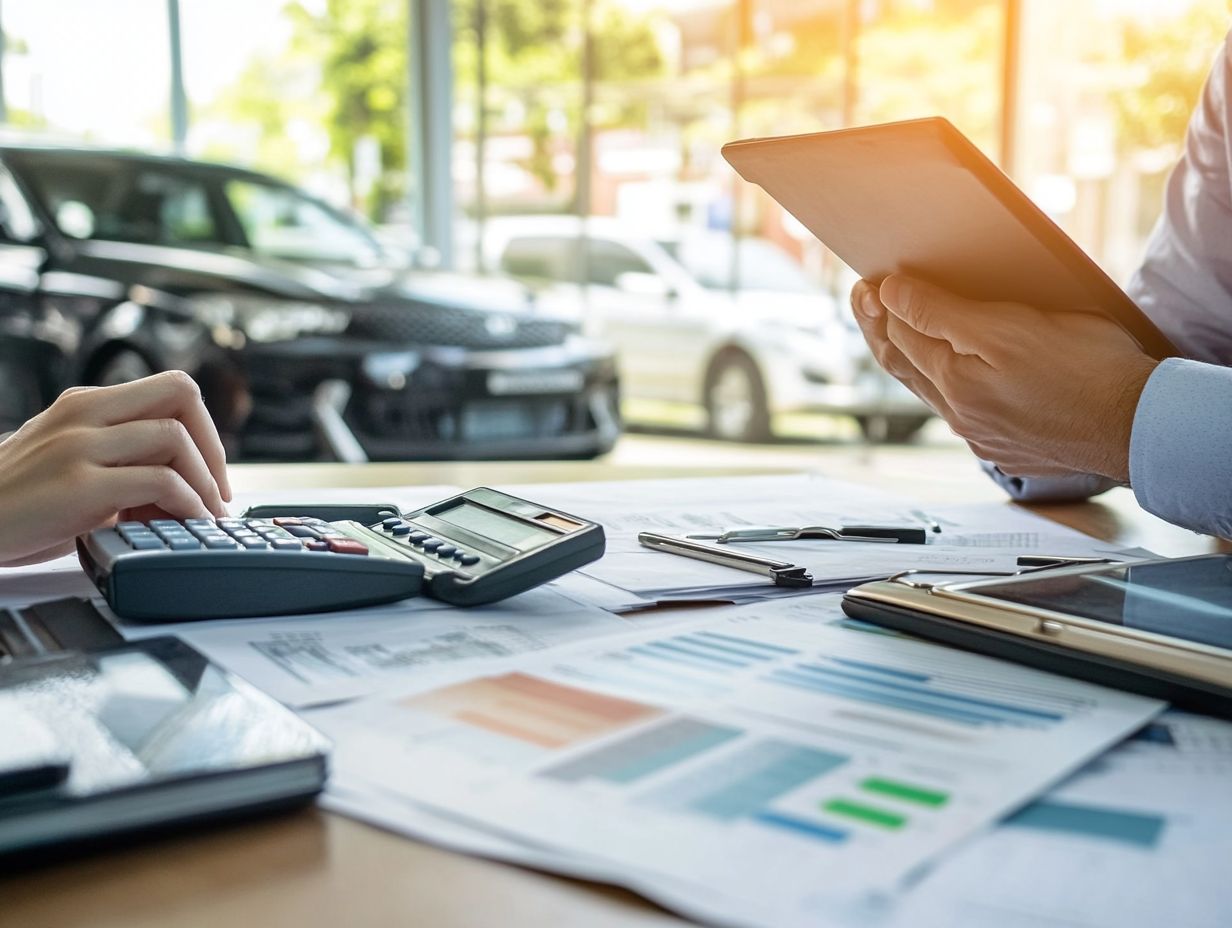
The best way to determine the value of your used car is by researching its market value. You can use online tools such as Kelley Blue Book or NADA Guides to get an estimate of your car’s worth. Consider its condition, mileage, and any additional features it may have.
Should I clean and fix up my used car before negotiating the trade-in?
Yes, it is recommended to clean and make any necessary repairs to your used car before negotiating the trade-in. A clean and well-maintained car can increase its value and give the dealership a better impression of the vehicle’s condition.
Can I negotiate the trade-in value separately from the price of the new car?
Yes, you can negotiate the trade-in value separately from the price of the new car. It is recommended to negotiate them separately to avoid confusion and ensure you are getting the best deal for both aspects of the transaction.
What are some tips for negotiating a used car trade-in?
Some tips for negotiating a used car trade-in include researching the market value of your car, being prepared to walk away if the dealership does not offer a fair price, and being willing to negotiate on both the trade-in value and the price of the new car.
Is it possible to negotiate a better trade-in value if I owe money on my current car?
It is still possible to negotiate a better trade-in value if you owe money on your current car, but it may be more challenging. To improve your chances, consider these negotiation tips for buying a new car, as the dealership will likely deduct the remaining balance from the trade-in value. Therefore, it’s important to know the payoff amount and negotiate accordingly.
In conclusion, exploring various selling options can lead to a better financial outcome when parting with your vehicle. Don’t miss out on the chance to maximize your profit!





